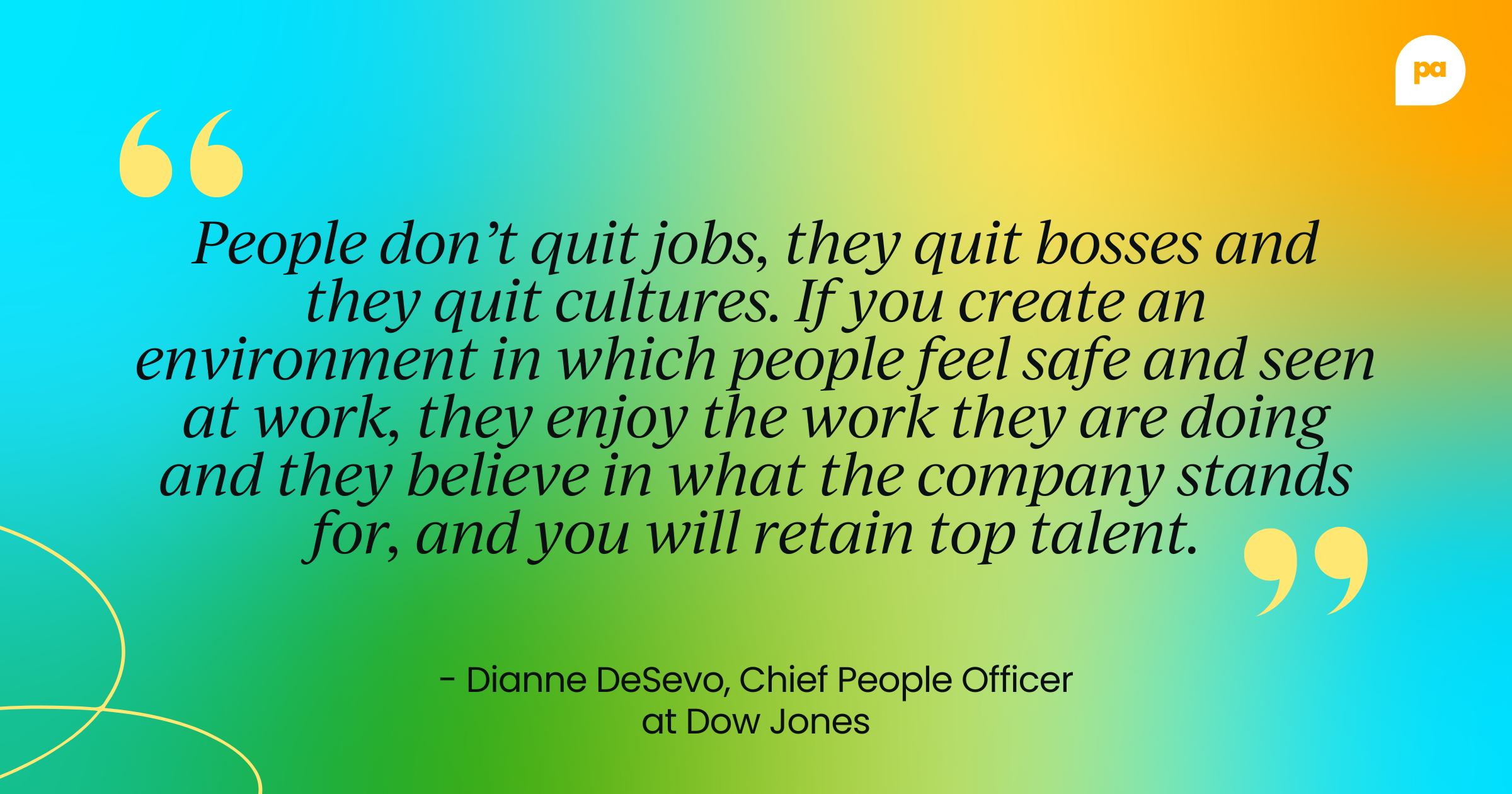An extensive Korn Ferry study warns that, by 2030, there could be a skilled-worker shortage large enough to leave over 85 million positions unfilled (representing as much as $8.5 trillion in lost revenue).
So, many companies are looking to Chief People Officers (CPOs) to develop strategies for attracting and retaining the best people.
“People are a critical success factor for all organisations. Effectively harnessing their skills, behaviours, creativity and leadership will significantly impact the performance of your organisation, shaping your productivity, culture, brand and market reputation.
“In most organisations, the CPO performs an established and well-respected role within the Executive Leadership Team. This demonstrates the people function’s contribution to business growth and the importance of appointing the right type of leader to this role.” – Geoff Curran, Practice Leader for Gerard Daniels in Sydney
The evolution of the CPO role
The role of the CPO has changed a lot over the past decade.
A study by BIE Executive shows that, while foundational skills like building inclusive cultures, aligning people strategy to commercial goals, and managing stakeholders remain, CPOs are increasingly expected to possess strong transformation capabilities and act as business leaders, not just HR specialists.
This also includes investing in stronger people analytics to see improvements in retention and employee satisfaction.
“The modern People Leader must be a good storyteller. It's when someone else can see themselves in you, that they really start to gain some perspective, confidence, and clarity around what the future could be for them.” – Kate Parente, Chief People Officer at Pegasystems
Shaping the employee experience
The answer to the question “what does a Chief People Officer do?” is multilayered and depends on the company they work in.
However, more often than not, CPOs collaborate with other leaders to articulate the company’s mission, vision, and core values. They also ensure this is reflected in daily operations so employees feel a strong sense of purpose and belonging.
One example of culture shaping comes from Dow Jones. Their CPO, Dianne DeSevojoined during a transitional period in 2021 and led efforts that changed both culture and operations.
Under her leadership, the company:
- Adopted a fully hybrid work model,
- Made parental leave more generous ( 20 weeks regardless of caregiver status),
- Expanded bereavement leave so there was no longer a requirement for a specific “family member qualifier”, and
- Introduced a one‐week-per-quarter remote work perk.
CPOs shape organizational cultures by designing seamless onboarding processes as well, which immerse new hires into the org’s culture, values, and strategic goals.
Employee engagement and recognition are also important, meaning CPOs are responsible for designing rewards systems.
There are many other ways Chief People Officers influence a company’s culture, including enabling growth and development by career mapping, ensuring employee wellbeing and work-life balance, and promoting diversity, equity, and inclusion.

Acquisition and retention
It goes without saying that talent acquisition and retention is one of the key CPO responsibilities.
They focus on attracting the right people by designing a strong hiring strategy that aligns with the company’s brand and growth goals.
This means building a compelling employer brand through storytelling (e.g., showing the org’s culture, designing great career pages, etc.) and by encouraging current employees to share their authentic experiences.
It also means coming up with the right workforce strategy, so CPOs collaborate with other leaders to predict skill gaps and plan recruitment.
Another important thing to mention is that modern CPOs tend to look at people analytics (quality-of-hire, candidate satisfaction, etc.) to attract talent.
OneAdvanced notes that this type of data is not a nice-to-have, but a core element of Chief People Officers’ strategies and helps them spot risks and act early. In fact, about 86.9% of people management executives say that “understanding data and people analytics will be a crucial competency for HR leaders over the next five years”.
When it comes to retention, CPOs work hard to ensure employees stay engaged, supported, and inspired.
For example, you’ll want to provide structure onboarding and mentorship for new hires, as well as check in with them the first 3 months to address issues before they become a serious problem.
You’ll also focus on career growth and development by designing learning programs that help employees upskill and progress in their roles.
Another responsibility is to benchmark salaries and provide competitive compensation packages, as we’ve seen with the Dow Jones example above.

Leadership training
CPOs should look at leadership development as an investment. People at every level, be it team leads, managers, or executives, must be equipped to guide the company through growth and change.
So, as a Chief People Officer, you’ll want to define what it means to be a leader in your organization (skills, behaviors, and mindsets you’re looking for) and create a framework to help people achieve that.
This might include technical expertise, emotional intelligence, and inclusive management.
You’ll need to identify and nurture people with potential to be great leaders as well, design structured development programs, provide coaching and mentoring, create a culture where people can give their feedback, and more.
Meeting changing workforce expectations
This includes looking beyond salary and benefits, as employees want purpose and flexibility as well.
So, Chief People Officers are responsible for implementing strategies like hybrid or remote schedules, expand support to include mental health resources, family leave, and more.
They should also set clear career paths and equip managers with the necessary skills to guide employees throughout their career.
Another thing employees expect is inclusion, so you must ensure your policies are inclusive and staff has all the support they need (and feel like they belong).
Adapting to AI
A CPO acts as the strategic bridge between workplace trends that keep changing and a company’s people strategy, so that employees stay engaged, productive, and prepared for the future.
This means keeping up with AI as well. AI tools can be used in many different ways, including hiring.
An example of this was Chipotle using an AI virtual assistant they called “Ava Cado” to manage large-volume hiring during “burrito season”, as they looked to hire 20,000 new workers. The software answered people’s questions, scheduled interviews, and issued offers.
“'Ava Cado' has helped streamline our processes in order to capitalize on top talent faster and remain competitive in high volume hiring,” Ilene Eskenazi, Chipotle's Chief Human Resources Officer, told Business Insider.
CPOs also prepare employees for AI by ensuring upskilling and reskilling (e.g., creating programs to help employees develop AI skills), communicating clearly about how AI will impact roles, and choosing the best tools and practices to stay compliant.
Collaborating with the C-suite
As we’ve seen, Chief People Officers are partners, not just a support. They align people strategy with business objectives, and this matters because initiatives work when they directly support revenue growth, market expansion, or innovation goals.
They also partner with key C-suite roles:
- CEO: They work together to define and communicate company values and vision, as well as create messaging and modeling behaviors that guide employees through mergers, reorganizations, or new market entries.
- CFO: They align on compensation structures, benefits costs, and ROI for learning programs, for example. They also forecast workforce budgets.
- CTO/CIO: They integrate HR tech, analytics, and AI tools with the company’s digital strategy.
- CMO: They craft a compelling narrative to attract top talent and make sure the brand mirrors internal culture. Also, they turn employees into brand ambassadors.
- COO: They streamline workforce planning, shift scheduling, and process improvements, and also collaborate on health, safety, and regulatory issues.

Chief People Officers also help build a unified leadership culture by holding regular cross-functional meetings to anticipate and identify challenges, sharing insights on emerging HR trends, and position people initiatives as an enterprise responsibility, not just HR’s domain.
TL;DR
What does a Chief People Officer do? As we’ve seen, a lot. They have fingers in many different pies and ensure people are not only managed, but empowered too.
CPOs work hard so that company strategy goes beyond markets/products and considers people, from their skills to inclusivity and purpose.
Join our growing community of people leaders to connect, share insights, get expert advice, and grow with your fellow CPOs, CHROs, and people managers.




 Follow us on LinkedIn
Follow us on LinkedIn

